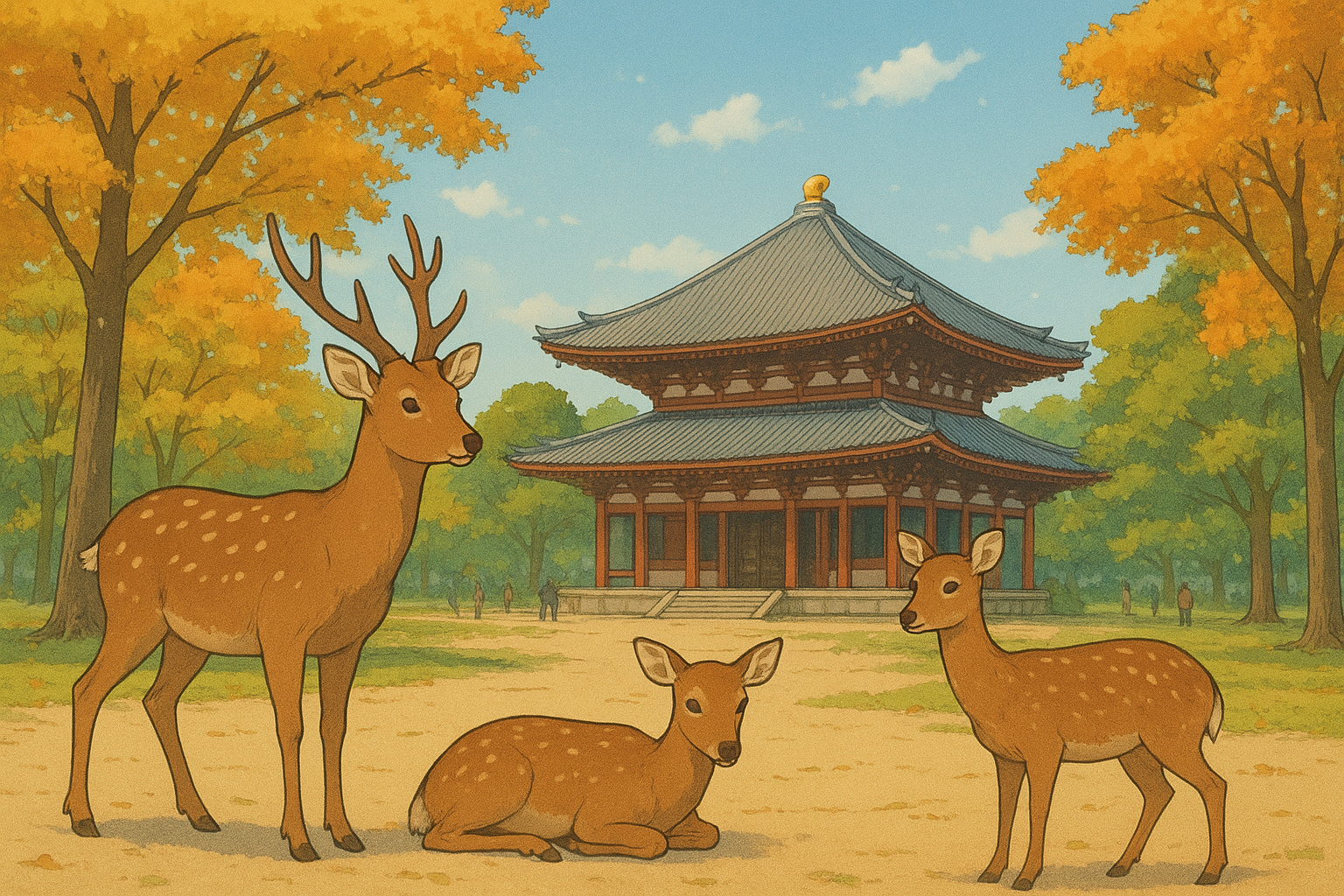
Nara: A Gentle Capital of History, Culture, and Deer
Nestled in the Kansai region of Japan, Nara is a small city with outsized historical importance. Once the nation’s first permanent capital (Nara-kyō) in the 8th century, it preserves magnificent Buddhist temples, Shinto shrines, classical gardens, and a relaxed pace that invites lingering exploration.
History
Nara’s history is central to Japan’s cultural foundation. As the imperial capital from 710 to 794 CE, the city became a focal point for the introduction and institutionalization of Buddhism, which shaped architecture, literature, and governance. Many of Nara’s surviving landmarks — enormous wooden temples, monumental Buddha images, and ritual spaces — date from or celebrate that formative era.
Current status
Today Nara balances its sacred past with modern local life: residents commute to nearby cities while the city itself remains compact, pedestrian-friendly, and quieter than nearby Kyoto or Osaka. Tourism is important but measured, with efforts to preserve heritage sites and protect the city’s character while offering comfortable visitor infrastructure.
Local culture
Nara’s culture is steeped in religious tradition and seasonal festivals, where Shinto rituals and Buddhist ceremonies still mark the calendar. Crafts such as lacquerware and local festivals that celebrate rice, the seasons, and historical anniversaries keep community ties strong. Respectful, contemplative attitudes are common — visitors are encouraged to move quietly and observe sacred customs.
Food
Nara’s cuisine highlights the simplicity and seasonality of regional Kansai cooking. Local specialties include kakinoha-zushi (pressed sushi wrapped in persimmon leaves), hearty simmered dishes, and fresh tofu prepared in traditional styles. Small specialty shops, markets, and cozy eateries around Naramachi and near the temples offer authentic bites that pair well with a stroll through the city.
Attractions
Nara Park and the freely roaming sika deer form the city’s iconic, approachable heart. Spread across a wide green plain, the park provides a peaceful setting for walking between temples and tea houses, and the deer — regarded as messengers of the gods — add a charming, unforgettable element to any visit.
Todai-ji is the monumental temple complex anchored by the Daibutsu (Great Buddha), one of the world’s largest bronze Buddha statues. Its vast wooden Great Buddha Hall (Daibutsuden) is a breathtaking example of classical Japanese temple architecture and offers a powerful sense of scale and spirituality.
Kasuga Taisha is Nara’s most celebrated Shinto shrine, famous for its lantern-lined approaches and centuries-old forested precincts. Thousands of hanging and stone lanterns, lit during special festivals, create a mystical atmosphere that reflects the shrine’s deep ties to local history and nature worship.
Naramachi, the old merchant district, invites visitors into narrow lanes of preserved machiya (townhouses), boutique shops, and small museums. Exploring Naramachi reveals a lived-in historical layer of Nara: traditional homes repurposed as cafes, craft shops, and galleries that showcase daily life across centuries.
Isuien and Yoshikien Gardens are two classic Japanese gardens that showcase refined landscaping and seasonal beauty close to the temple district. These gardens offer intimate spaces of ponds, tea houses, and carefully composed views — ideal for quiet reflection and appreciating horticultural artistry.
Each of these attractions ties into Nara’s broader appeal: a rare combination of monumental history, tranquil urban nature, and authentic local life that rewards slow discovery.
Nara travel blog — The fullest Nara travel guide for first-timers
Comprehensive first-timers guide covering major sights (Todai-ji, Kasuga Taisha, Nara Park), transport options, suggested itineraries, gardens (Isuien), deer etiquette, food tips and practical costs for getting around.
Nara Travel Guide: An Excellent Guide to the World
Detailed day-by-day itinerary suggestions, practical visiting hours and admission info for temples and museums, neighborhood highlights (Naramachi), local food notes and transit tips for planning short stays.
Best Things to Do in Nara
Curated list of Nara highlights and seasonal attractions—Nara Park and deer, Todai-ji, plum- and sakura-related spots, festivals, gardens and lesser-known local experiences with timing recommendations.
Top things to do in Nara
Feature-style article from Lonely Planet that explains why to visit Nara, profiling its signature experiences (Great Buddha, Wakakusa Yamayaki, Omizutori/Otaimatsu ritual), key temples and festival timing with contextual travel tips.
Nara for first-timers - a thorough guide to Nara City
Official Nara tourism feature offering authoritative background on Nara’s World Heritage sites, recommended itineraries for different visitor types, access information and local gourmet recommendations.
